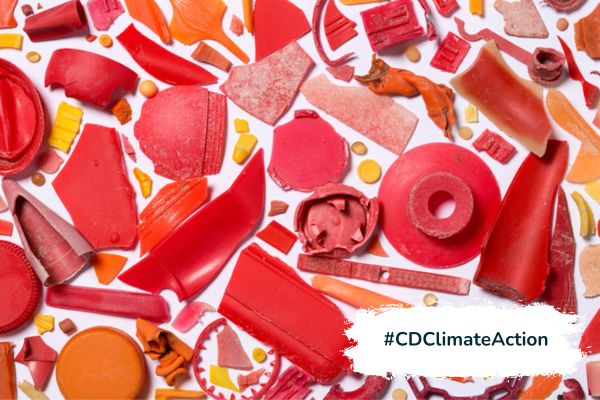Insights
INSIGHTS
All Topics
My Account
Climate change: digital and your carbon footprint
14 Mar 2023by kirsty marrins
We explore the impact of digital on the environment and how charities can reduce their own digital carbon footprint to tackle climate change
CHECK OUT THE ’CLIMATE ACTION’ HUB!
When we think of reducing our carbon footprint, we often think of solutions such as recycling, reducing waste, choosing cycling or public transport over cars, and travelling by trains rather than flying. We don’t necessarily consider our digital carbon footprint.
Yet, digital technology is responsible for 3.7% of global greenhouse gas emissions – according to a report by carbon transition think tank, The Shift Project.
What is a digital carbon footprint?
A carbon footprint is the total greenhouse gas emissions (GHG) that are caused by the activities of a person, organisation, country or other entity. These activities could include driving a car, manufacturing a product, the type of food we consume, and much more.
A digital carbon footprint is the total GHG that is emitted from digital technology, such as computers, email, mobile phones et cetera.
It includes not only the emissions caused by the use of digital technology but also in its manufacture, as well as the energy consumed by data servers and data centres that contribute to GHG.
A simple way to look at an example of a digital carbon footprint is to consider what the carbon cost is just to send an email.
In a 2010 Guardian article, Mike Berners-Lee, author of How Bad are Bananas?: The Carbon Footprint of Everything (updated in 2020), explained that “When you are typing, your computer is using electricity, when you press send it goes through the network, and it takes electricity to run the network. And it’s going to end up being stored on the cloud somewhere, and those data centres use a lot of electricity”.
Berners-Lee estimates that the carbon footprint of emails ranges between 0.03g and 26g. The amount of carbon dioxide emitted depends on a range of factors, including the length of the email, whether it has attachments, whether it is read on a mobile phone or desktop, and if it’s spam.
How to address your digital carbon footprint within a wider strategy
Whilst it’s important for charities to lower their digital carbon footprint, this should form part of a wider sustainability strategy, that also includes non-digital activities that contribute to GHG – such as staff travel, whether your suppliers have a sustainability policy or have environmental credentials, and whether your bank is one that invests in renewable energy.
You may wish to form an environmental working group, who has oversight of the strategy, and can review it as needed. The working group could be a mix of senior leaders as well as staff who have a particular interest in sustainability.
How charities can lower their digital carbon footprint
The first step to lowering your digital carbon footprint is understanding what it is currently.
Audit your digital carbon footprint
There are paid tools, such as Greenly, that will measure your footprint as well as free tools, such SSE Energy Solutions’s carbon footprint calculator for UK businesses.
If you’re interested in the carbon footprint of a specific technology, such as your website, the Website Carbon Calculator is a free tool that will measure whether your website is low carbon or not.
IT teams can also start with reviewing processes, the ways in which staff use technology, and how often hardware is replaced.
Reduce the number of emails sent
A study in 2019, by energy company OVO, found that 64 million unnecessary emails are sent every day in the UK. And most of them are ones that simply say “thank you”. They estimated that if every UK adult sent just one less “thank you” email a day, it would save over 16,000 tonnes of carbon a year. That equates to over 81,000 flights to Madrid or more than 3,300 diesel cars off the road.
So just as we added “think before you print” to the bottom of our emails, charities should embed a culture of “think before you email”. Now that many of us are returning to the office, getting up to speak to a colleague is better for the environment than sending an email.
Switch website hosts
Just how green is your website host? Consider switching to a host that not only uses green energy but also has energy efficient data centres.
Recycle your hardware
When desktops, laptops, and any other hardware needs replacing, it’s important to recycle them responsibly. They may even be able to be refurbished and used again.
Choose your hardware wisely
Look for hardware that has low power consumption, uses recyclable materials, and has a longer lifecycle.
Green your website
Your website is essential, yet it’s most likely one of the biggest contributors to CO2 emissions. There are several ways to make your website “greener”, such as reducing the amount of content, images, and video that sit on your website, working with sustainable third party services, looking at your user-experience and reducing the number of steps people take to reach the information they need.
Sign up for our newsletter
Click above to receive the latest sustainability content straight to your inbox
More on this topic
Related Content
Recommended Products
Our Events
Charity Digital Academy
Our courses aim, in just three hours, to enhance soft skills and hard skills, boost your knowledge of finance and artificial intelligence, and supercharge your digital capabilities. Check out some of the incredible options by clicking here.






























